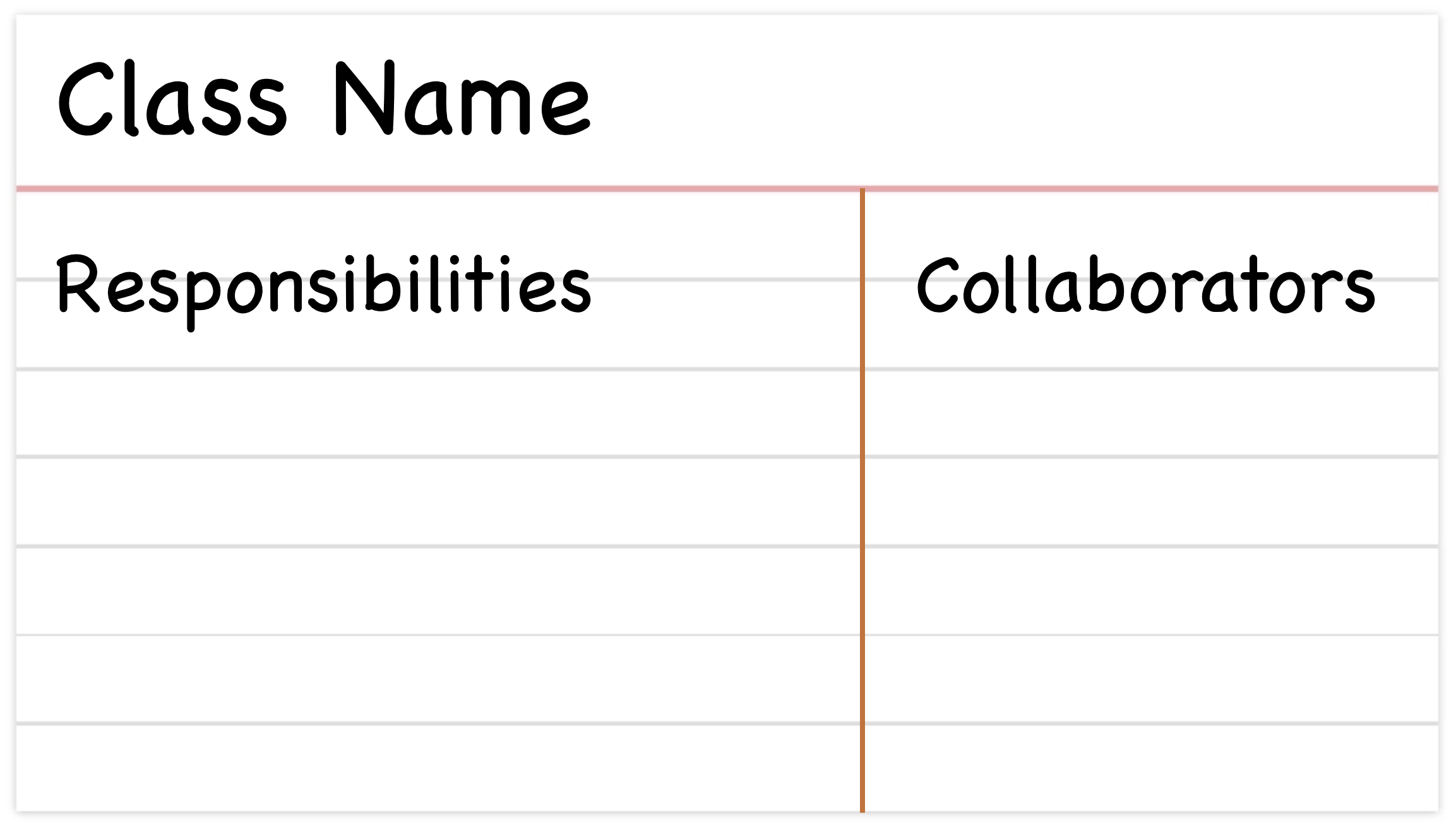Extract classes from problem description
Assume you have selected a few User Stories to implement for the next iteration. Now you need to extract classes from the problem description (User Stories). We will use a fairly simple method to address this task, which serves well for most software problems. It involves:
- using the verb/noun method to discover initial classes
- using CRC cards to discover responsibilities (behaviors) of each class and the collaboration (relationships) between them.
The verb/noun method
Read through a User Story, looking for nouns that represent objects in the problem domain. These nouns represent the simplest candidates to be classes. Moreover, actions that determine classes' behavior often reveal themselves as verbs in a User Story.
For example, consider the following User Story (from MyBooks App)
The nouns "User" and "Books" are candidate for a class. The verbs "add" (a book) and "create" a list of favorite books are candidates for the methods (behavior) shared among (the nominal) classes.
The verb/noun method is a gateway to your design but don't follow it religiously! Not all nouns nor all verbs correspond to classes/behaviors. You might find later that you need a few additional classes or that some of the classes extracted at this stage are not needed.
Aside
Conventionally, the names of classes are singular rather than plural. This is because the multiplicity is achieved by creating multiple instances of a class.
The CRC Model
A Class Responsibility Collaborator (CRC) model1 is a collection of standard index cards that have been divided into three sections, as depicted below.

Here is an example of a CRC card for the aforementioned User Story.

A responsibility is something that a class knows or does. Often a class has to collaborate with other classes to fulfill a responsibility. Collaboration usually takes one of two forms: a request for information or a request to do something.
info
CRC model was originally used as a teaching technique but found its way to agile software development arsenal as an effective modeling tool.
CRC Session
The goal of a CRC session is to discover classes and convert them to CRC cards. It is recommended to do this in a group setting to foster and facilitate brainstorming of good solutions.
The session involves iteratively performing the following steps:
- Extract classes.
- Find responsibilities.
- Define collaborators.
- Role-play to refine responsibilities/collaborators!
CRC Role-play
Each User Story describes a "scenario" for using the software. A common practice is to "execute a scenario" where each participant plays the role of a class and the group collectively simulates the user story.
info
- A software requirement specification document (SRS) is the initial input to the process. The document should include User Stories. A project that cannot provide SRS is not ready to begin modeling.
- Participants should have read and familiarized themselves with SRS that will be used in the session.
- A session should focus on a fairly small and manageable portion of the system at a time. Best is to focus on the subset of User Stories that will be implemented in the next iteration.
The outcome of a CRC session, like that of the verb/noun method, is not carved in stone. When you get to implement the model, new classes will be introduced, responsibilities will be reorganized, existing classes will disappear, and so on.
- Beck K., Cunningham W., "A Laboratory For Teaching Object-Oriented Thinking", available at http://c2.com/doc/oopsla89/paper.html (1989).↩